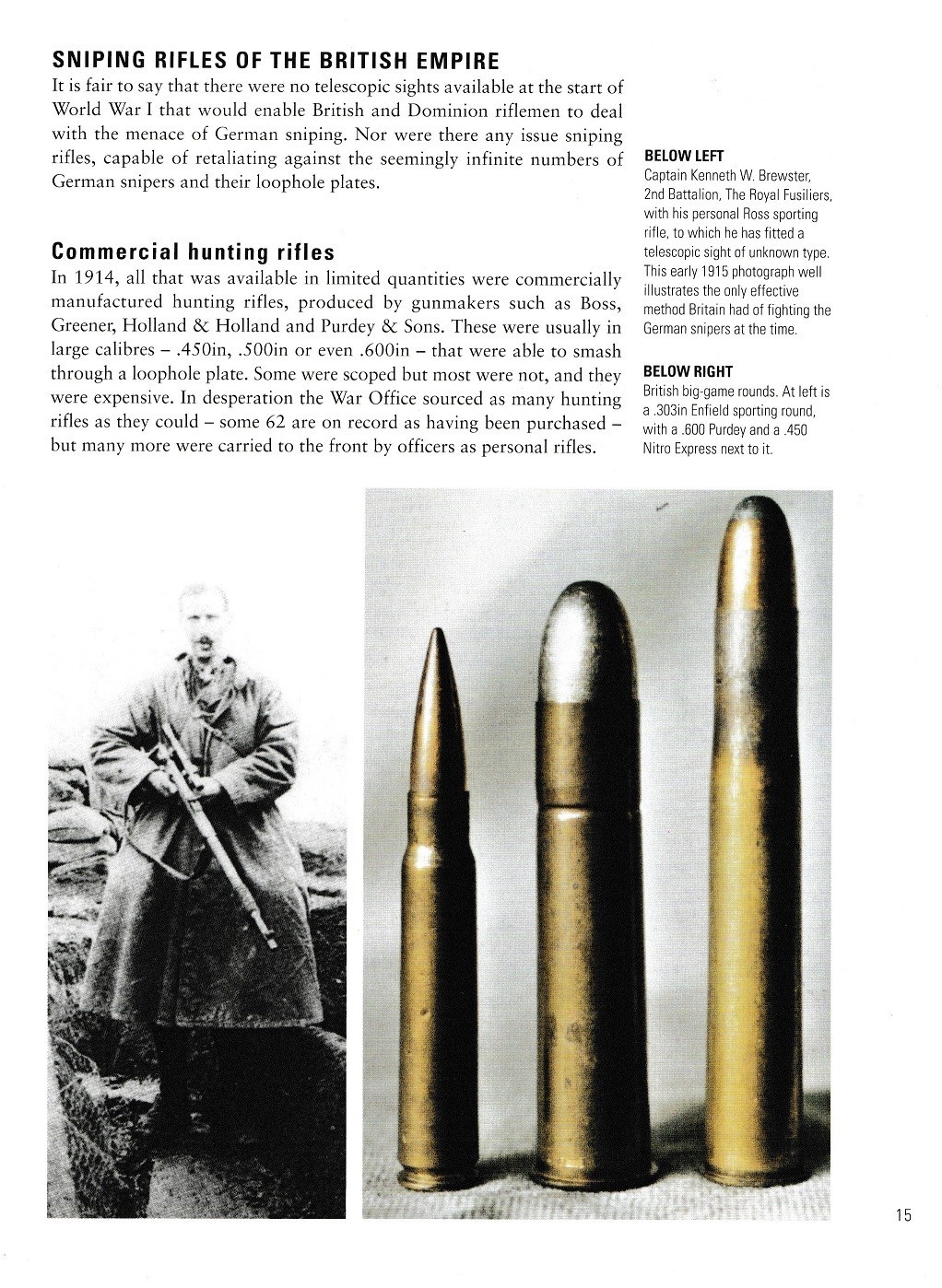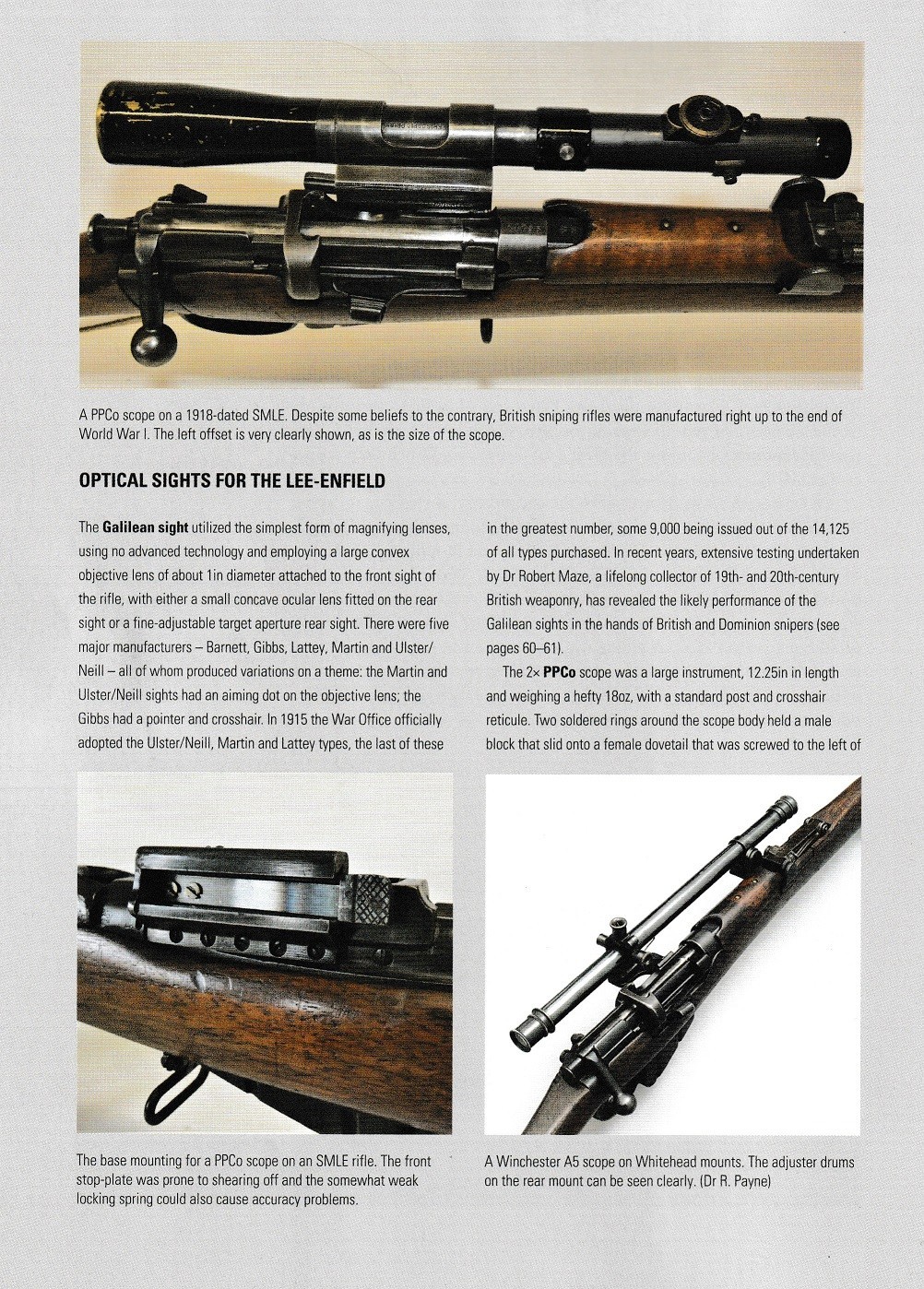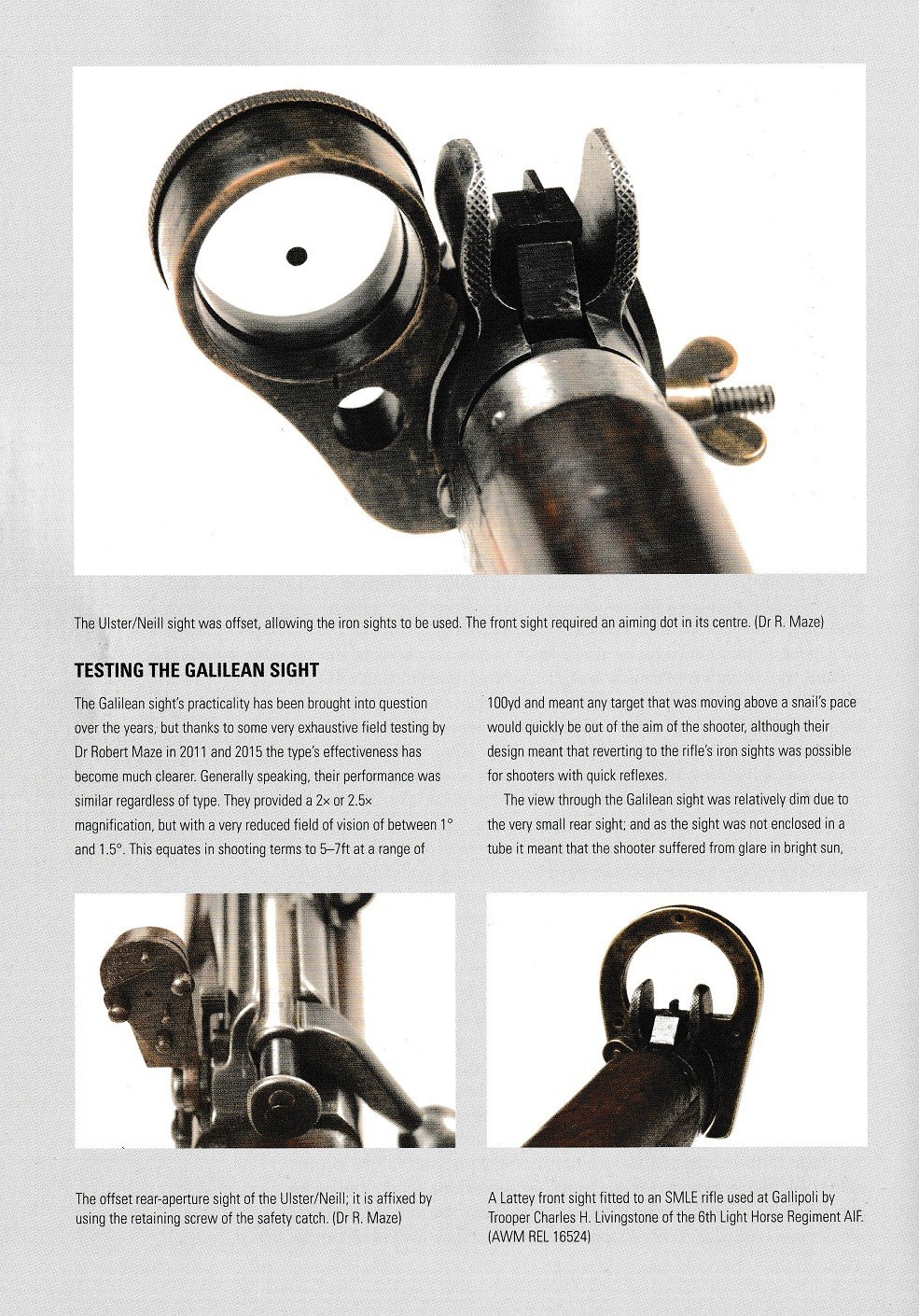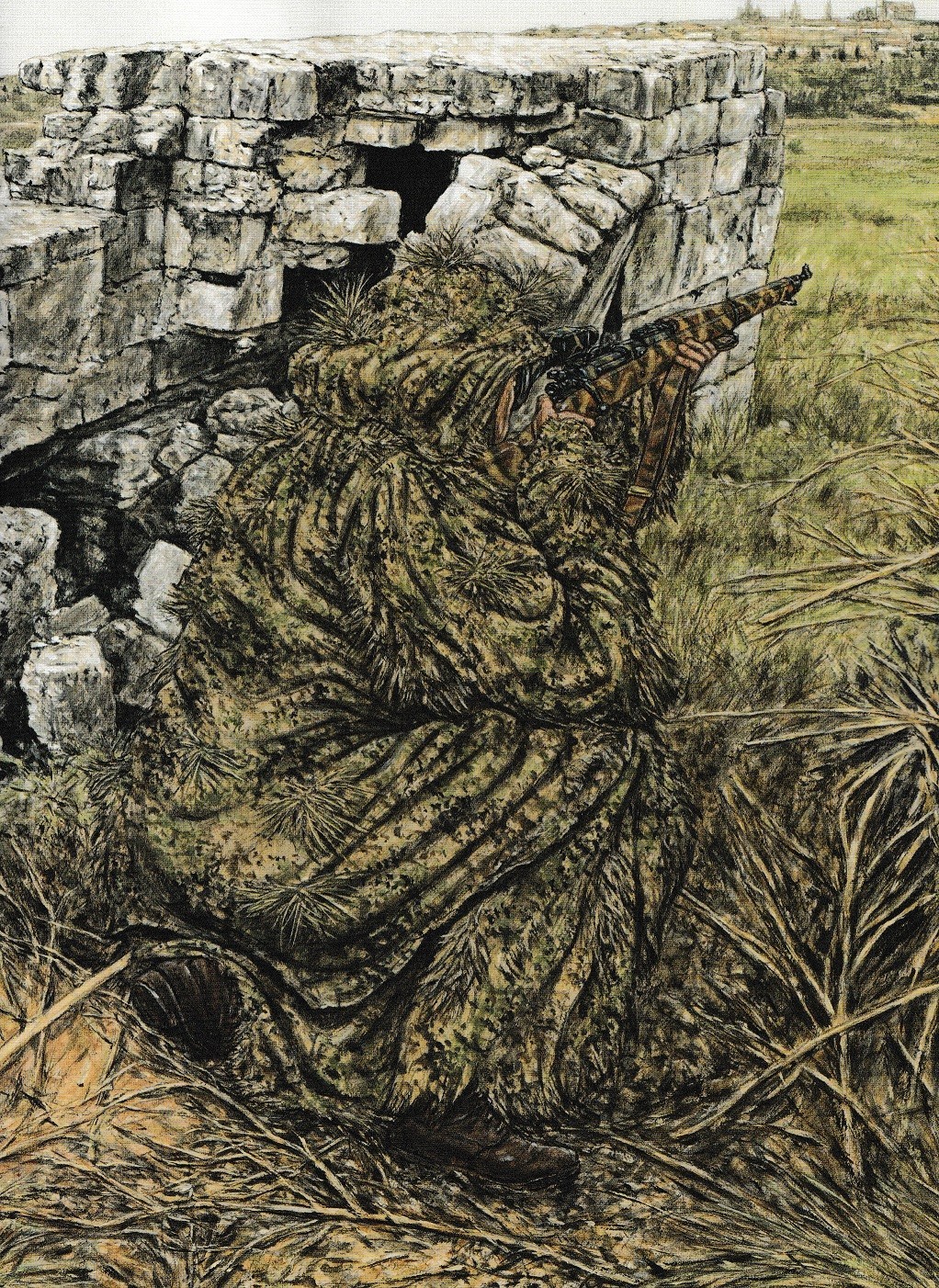HISTORY:
** In this absorbing study, firearms expert Martin Pegler tells the inside story of the sniping rifles carried by all of the major powers during World War I. Although military sharpshooting had existed since the 18th century, in 1914 only the Germans and Austro-Hungarian armies fielded trained snipers armed with scoped rifles. The allied armies found themselves on the receiving end of a shooting war to which they had no means of response. Only the Canadians brought a dedicated sniping rifle into the trenches, but in small numbers. For the British, although production of a suitable rifle and scope were settled on quickly, establishment of sniper training was difficult and its success was mostly due to the efforts of a handful of dedicated officers. The French eventually introduced a competent scoped rifle and a sniper training system, as did the Italians. Entering the war in 1917, the Americans experienced rifle shortages but were able to build on their pre-1914 efforts to find a suitable sniping weapon. The country that suffered most grievously was Russia; Russian troops fielded no snipers at all and suffered accordingly. Featuring full-colour artwork, carefully chosen archive images and rare photographs of the sniping rifles and accessories used in the trenches, this book explores their origins, development, combat use and legacy.**
** Quoted from the back cover of the book.
THE BOOK:
Osprey Publications has released Sniping Rifles in World War I as Number 83 in the Weapon series. It is an 80-page soft cover book. Included with the text are black and white and color photographs, color illustrations, detailed captions, cutaway views and more. It has a 2022 copyright, a publication date of May 26, 2022, and the ISBN is 978-1-4728-5076-8.
THE CONTENTS:
- Introduction
- Development
- Rifles, scopes and mounts
- Use
- Snipers in action
- Impact
- Lethal accuracy
- Conclusion
- Glossary
- Bibliography
- Index
THE TEXT:
Author Martin Pegler provides a well written text detailing various sniper rifles used by Germany, Australia, Turkey, Great Britain, France, Italy, United States during World War I from their development, production and introduction throughout their trials and testing, improvements and on through to their issuance and use by the snipers themselves. Martin Pegler provides an excellent description of all of the technical specifications of the weapons and accessories in an easy-to-read format which the detailed oriented reader will benefit from. I personally feel that Martin Pegler has covered all areas and aspects of the weapons and left no area of the weapons undiscussed and detailed. The text in the book is nicely written and well detailed. As I read through the text, I didn’t notice any spelling or grammatical errors. Grammar and spelling might not be an important factor to everyone however it is something that I take notice of and pass on my findings. I feel that if the text is well written then it shows that the author has taken the time to be professional with their writing. Anyone wanting to add an excellent reference and history book on sniper rifles and equipment used during World War I to their personal library will be pleased with this informative and interesting book.
THE PHOTOGRAPHS:
A total of 39 black and white photographs and 43 color photographs are included in this volume. The photographs range from wide angle photographs to close-up detailed photographs of the weapons and related equipment such as scopes, ammunition, scope carrying cases, binoculars, trench periscopes, Ghillie suits and armored headgear of different nations. They contain a combination of in-action photographs, photographs removed from motion pictures to photographs that had been staged for the photographer. The majority of the photographs are clear and easily viewable; however, some of the period photographs have an out of focus look to them and some appear to be too dark, and others appear too light. This can be typical for the discussed period of history and the quality of the photographs is no fault of the author and does not take anything away from the book. Author Martin Pegler stuck to the title of the book and chose subject specific photographs and did not include photographs that strayed from the main subject of the book. The majority, if not all, of the photographs will prove to be a wealth of information to anyone interested in sniper rifles and equipment used during World War I due to the details that they contain.
THE ILLUSTRATIONS:
There are 6 color illustrations, 3 action illustrations and 3 weapon cut-a-way view illustrations, with detailed captions, included by illustrators Adam Hook and Alan Gilliland. The illustrations are very well done, nicely detailed and are of:
Plate A
Snipers on the Somme, 1916
– A two-page color illustration depicting a British sniper team with homemade camouflage headgear hidden on the edge of a wheat field while a lone German sniper is searching with binoculars while seated at a table in a damaged building. The British sniper is armed with a British SMLE Mk III rifle with a Winchester A5 telescopic sight. The German sniper is armed with a German Gew 98 with a 3x Zeiss scope.
Plate B
Cortina d’Ampezzo, winter 1917
- A one-page color illustration depicting an Austrian sniper in winter camouflage and armed with a Mannlicher M95 sniper rifle in a recently captured position in the Alps. Lying next to him is a dead Italian sniper who was killed by another sniper.
Plate C
Montfaucon, 1918
- A one-page illustration depicting an American sniper, armed with a Springfield Model 1903 sniping rifle with a Warner & Swasey M1913 prismatic scope, searching for a target from his hidden position. The sniper is wearing a locally produced hessian camouflage suit and a British-pattern Brodie helmet. (See attached scan)
Cut-A-Way Illustrations
Plate A
The GEW 98 Exposed
- A two-page color cut-a-away view showing the internal workings of the German 7.92x57mm Mauser Gewehr 98 with Oigee scope. Also provided is a key which details 38 specific items that are pointed out on the weapon.
Plate B
The Ross Rifle Exposed
- A two-page color cut-a-away view showing the internal workings of the Canadian .303in Ross M1910 Mk III rifle with Warner & Swasey M1913 scope. Also provided is a key which details 31 specific items that are pointed out on the weapon.
Plate C
The Model 1917 Enfield Exposed
- A two-page color cut-a-away view showing the internal workings of the United States .30-06 Model 1917 Enfield rifle. Also provided is a key which details 34 specific items that are pointed out on the weapon.
THE CAPTIONS:
The captions are well written and explain the accompanying photographs and illustrations in great detail eliminating any doubt as to what is shown. The captions go into very specific detail as to the specific weapons shown, associated equipment carried and used, specific items of interest shown, military units, dates and locations and other such pertinent information. As I read through the captions, I didn’t notice any spelling or grammatical errors. Martin Pegler’s captions will be helpful to the reader due to their detailed content as opposed to other captions that I have seen that are very brief and lacking in detail.
Osprey Publishing also offers Sniping Rifles in World War I as:
eBook (Epub and Mobi) ISBN: 978-1-4728-5078-2
and
eBook (PDF) ISBN: 978-1-4728- 5079-9
Osprey Publishing’s, Sniping Rifles in World War I, is also available as an electronic Kindle version through Amazon.com.
PRICE:
UK £14.99 / US $22.00 / CAN $29.00
This book was provided to me by Osprey Publishing. Please mention that you saw the book reviewed here on the KitMaker Network when you make your purchase. Thank you.































